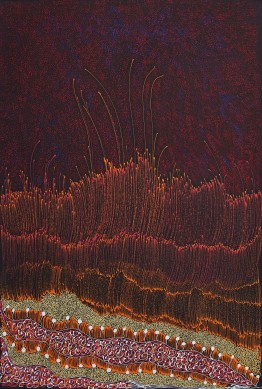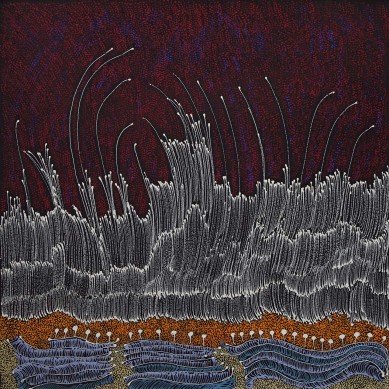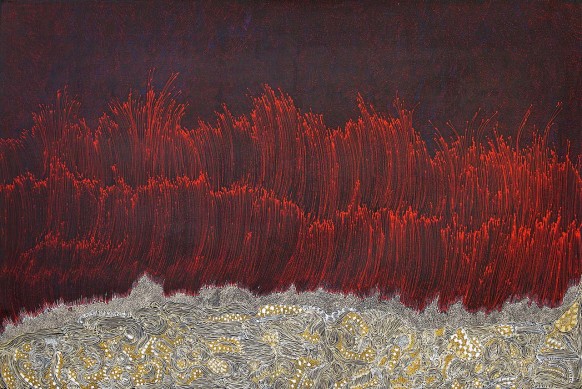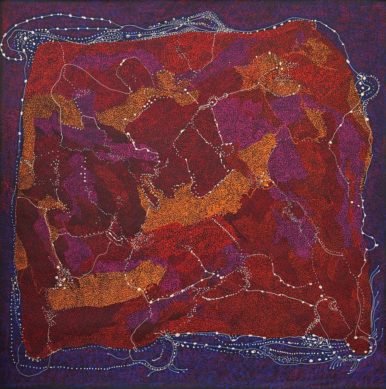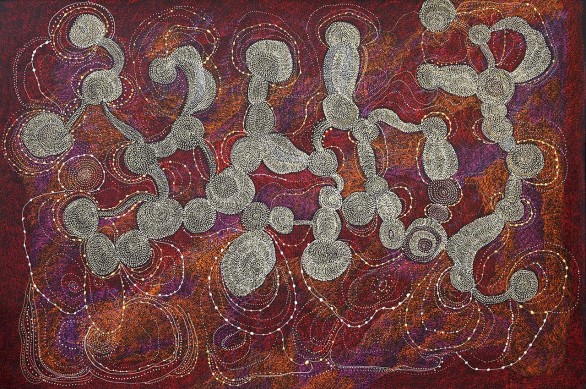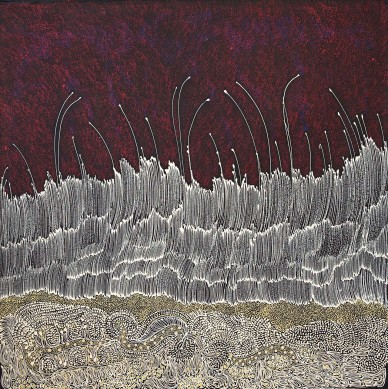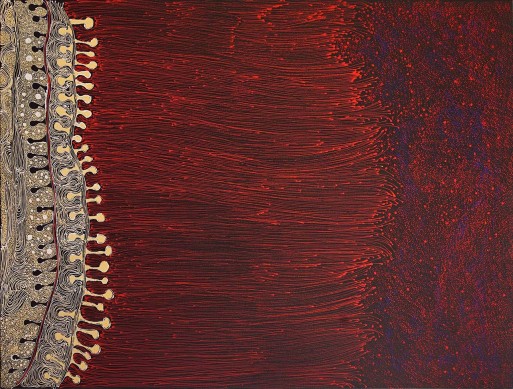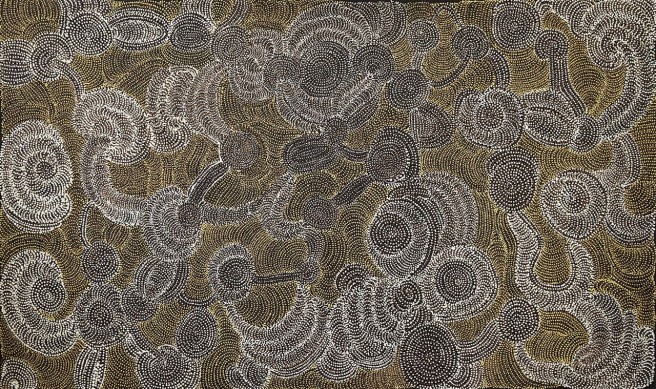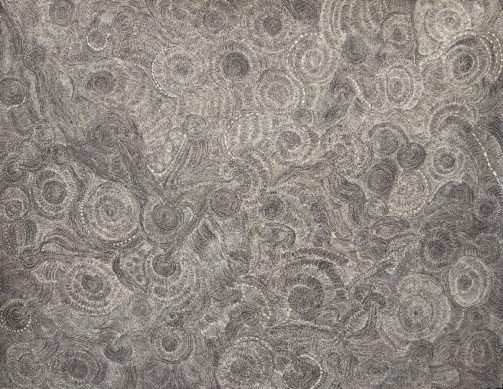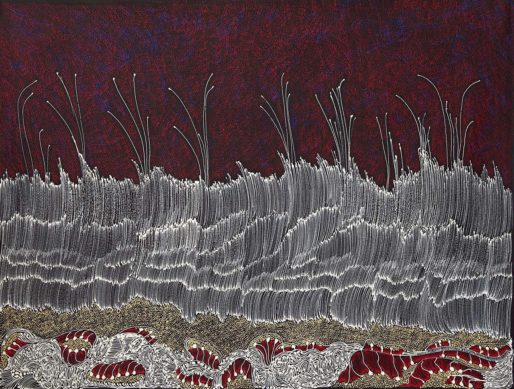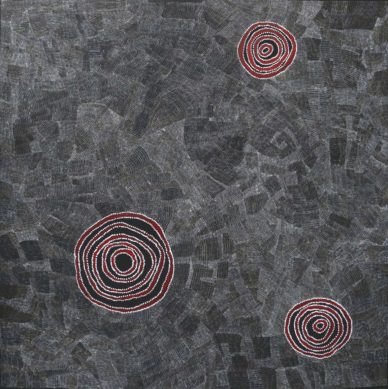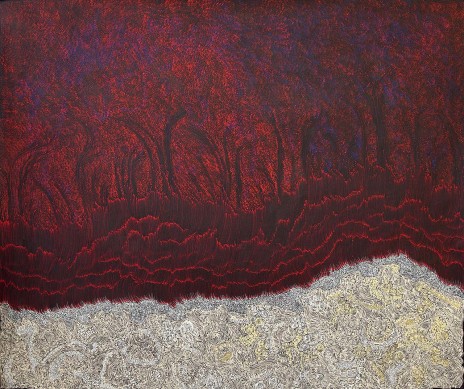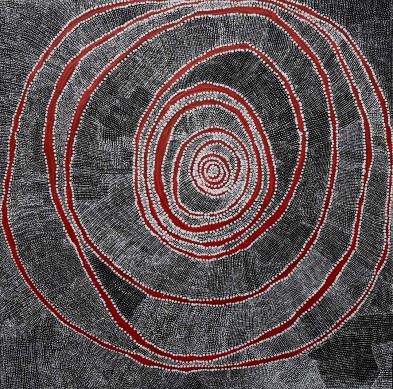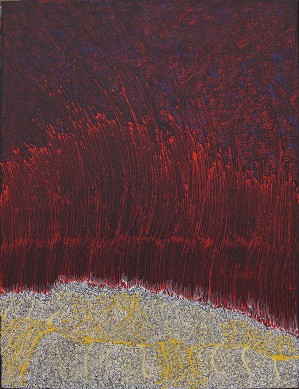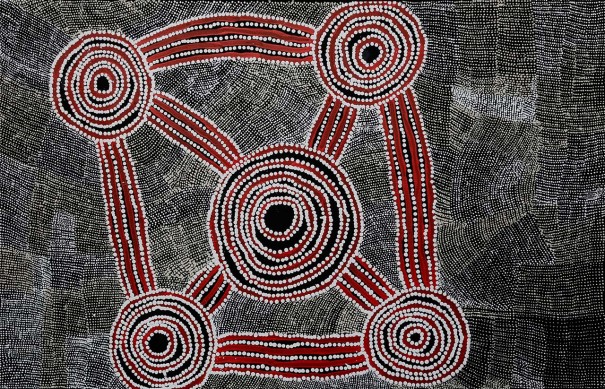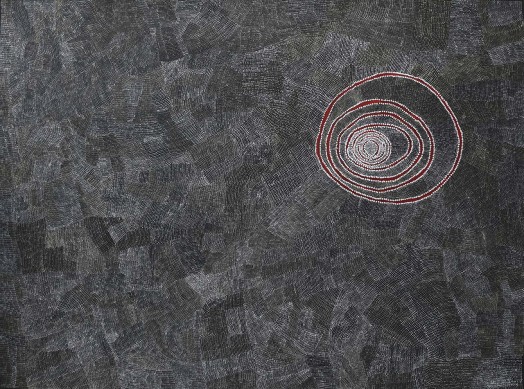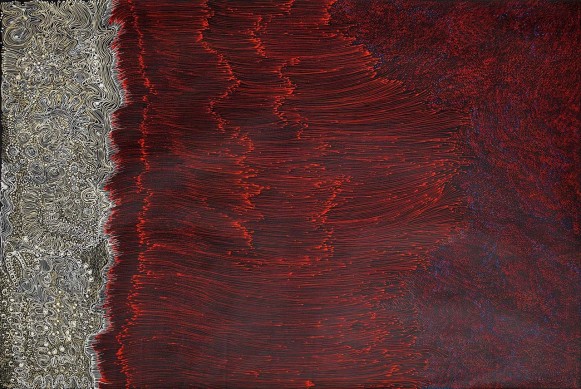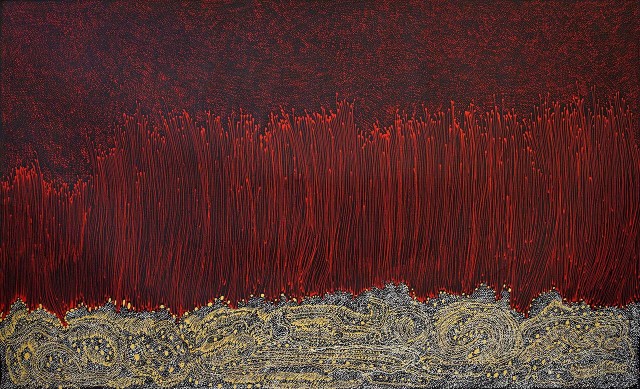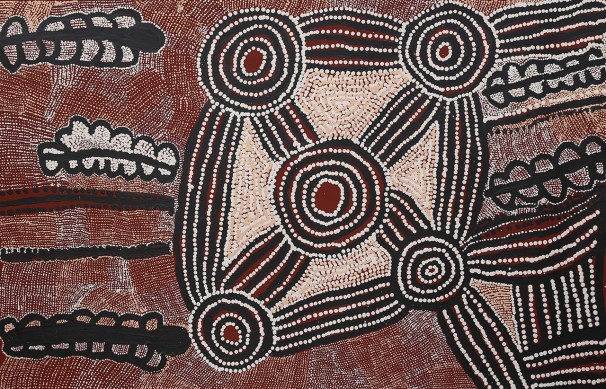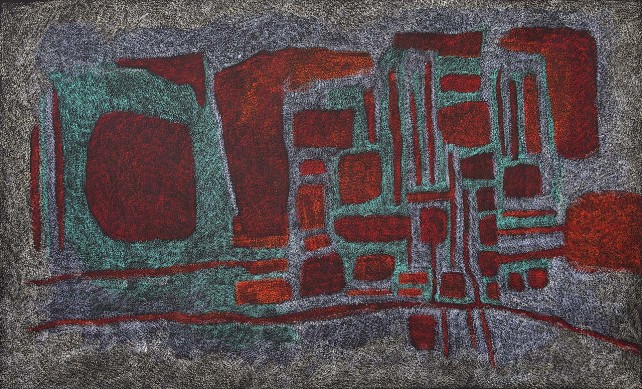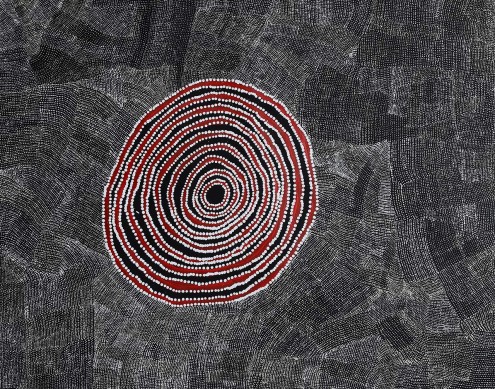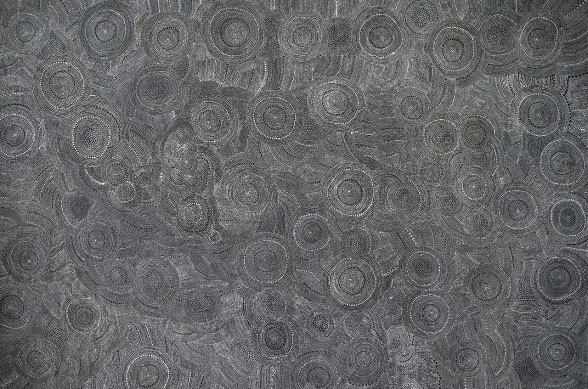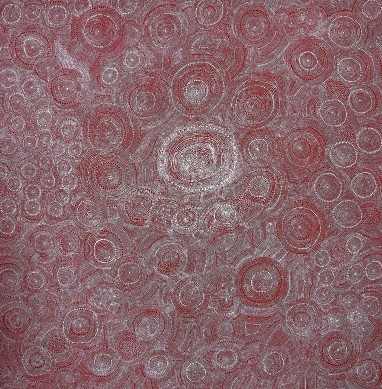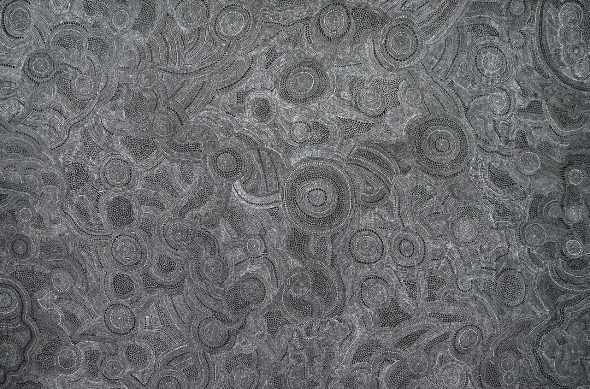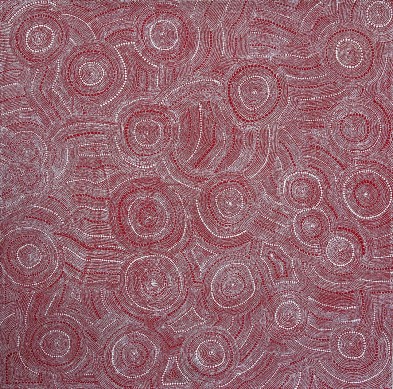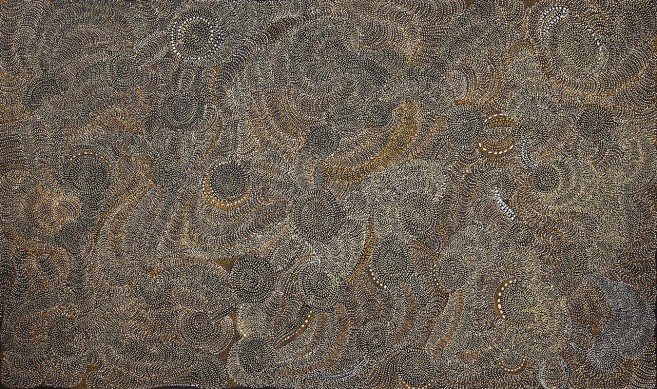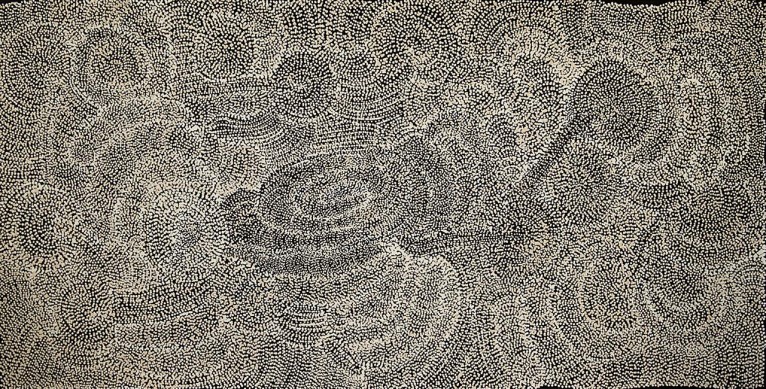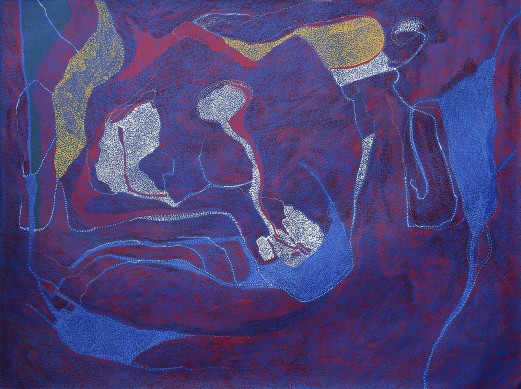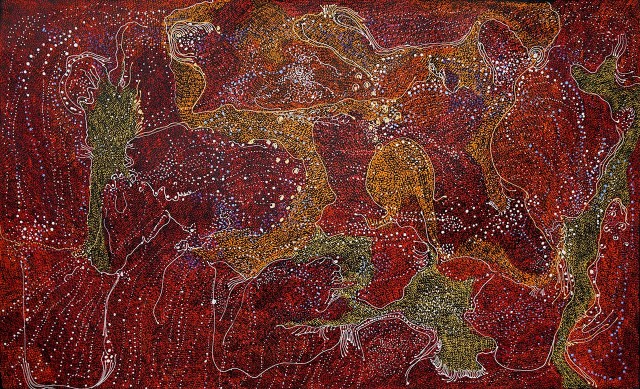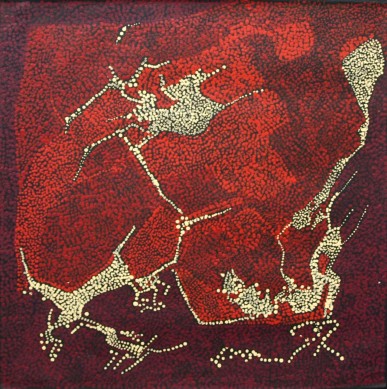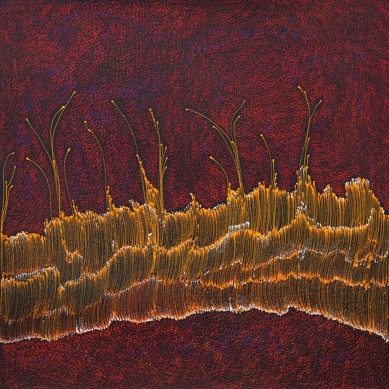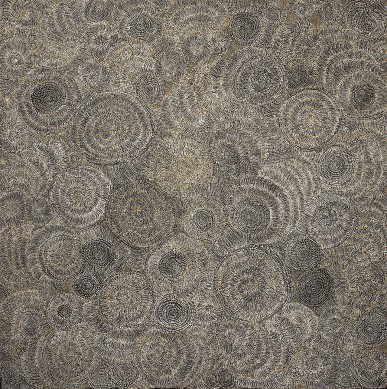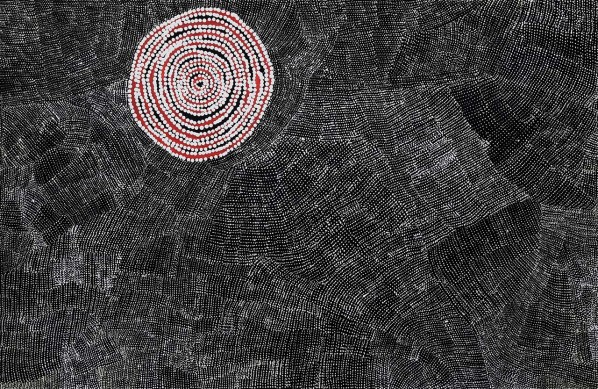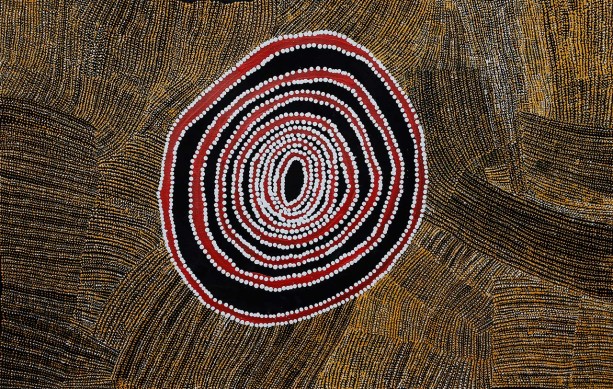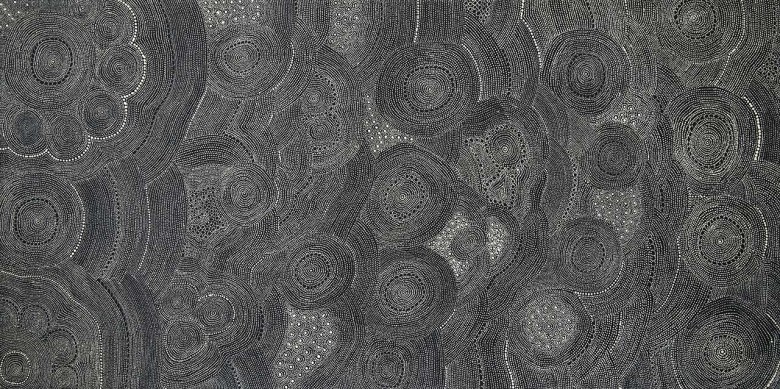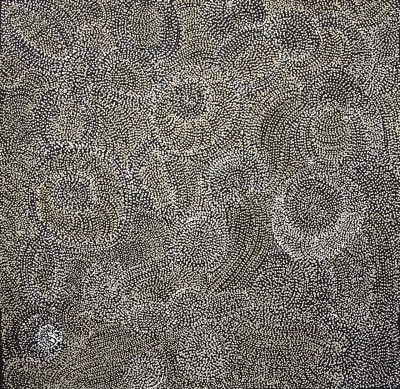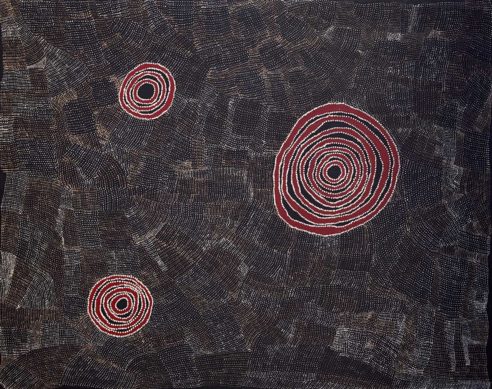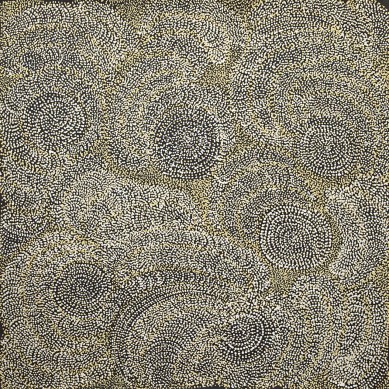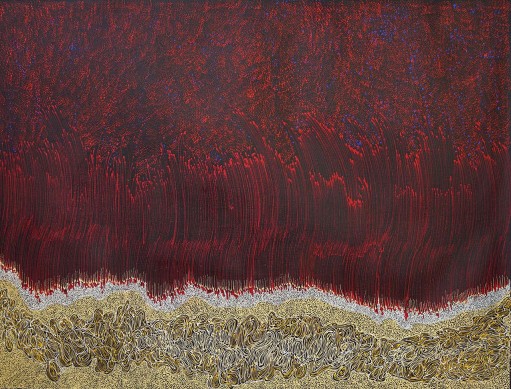Fine Dot Artists
Gallery 1
27 November – 23 December, 2015
Jorna Newberry has created images for Wind and Fire Dreaming from her mother’s country at Utantja, on Pitjantjatjara country in Western Australia near the meeting points of borders with the Northern Territory and South Australia. In Walpa Tjukurrpa, the Wind Dreaming, Jorna paints the swirling motions of the wind being sung to by the participants in the ceremonial dancing. The people sing up the wind to cool the land and to assist the hunters who can approach the animals from down-wind, thereby avoiding being recognised by the animals.
In Waru Tjukurrpa, Fire Dreaming, the use of fire for hunting and for land management on traditional Aboriginal lands is celebrated. When larger groups gather for ceremonial meetings, it is important to be able to gain enough food to feed everyone. One of the uses of fire is to help the hunters to flush out small game, including goannas and snakes. Jorna says of her mother’s traditional country that it is abundant with wild life, which makes it an ideal location for people to gather for ceremonial occasions.
Eva Nelson Napaltjarri’s paintings of Ngadajirri or Budgerigar Dreaming uses fine dots to recreate the landscape of hills and waterholes where the flocks of budgerigars return for nesting. The birds travel long distances to gather at the breeding sites. Aboriginal people know the migrating habits of the budgerigars and also that their presence indicates the proximity of water. Eva Nelson Napaltjarri inherited the rights to paint this story from her late father.
Wentja Napaltjarri paints the traditional country of her father, Shorty Lungkata Tjungurrayi, located in the Gibson Desert west of Kintore. Her paintings are maps of country showing also the metaphysical narratives of the Pintupi culture that dominate the landscape. The family walked vast distance when Wentja was a young, moving across the desert while making their way east to the settlements at Mt Liebig and Papunya. on the far side of the desert. Knowledge of the country and the waterholes were critical to her family group. Wentja’s father had made the journey earlier with his younger brother, and the story echoed a great narrative of the Ancestral Emu Men, who had to battle lack of water to survive the ordeal.
The work of these three Central Desert artists reflect the best of the fine dot art style and the deep cultural links this has with the ancient culture of desert life. The exhibition is on show at Japingka Gallery until 23 December 2015.

